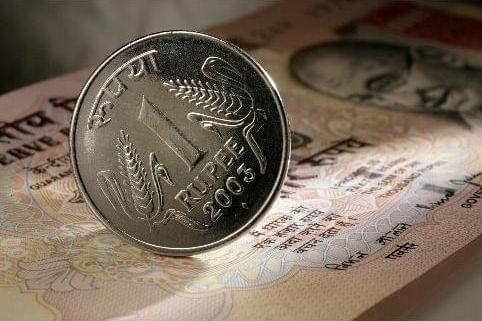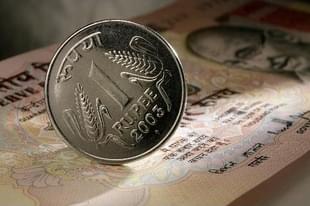Economy
World Bank: What India Can Do To Reverse Economic Slowdown
Arun Kumar Das
Aug 19, 2020, 05:42 PM | Updated 05:42 PM IST
Save & read from anywhere!
Bookmark stories for easy access on any device or the Swarajya app.


India needs to maintain reform momentum in areas such as health, labour, land, skills and finance to reverse the current economic slowdown, the World Bank said in a report on Wednesday (19 August).
The fiscal deficit of the central government is likely to increase to 6.6 per cent of gross domestic product (GDP) in financial year (FY) 2020-2021, and is expected to remain elevated at 5.5 per cent in the following year, according to the report.
The World Bank projections in this report are from May 2020.
"Implement critical reforms in key areas such as health, labour, land, skills and finance to come out stronger from the impact of the Covid-19 pandemic. These reforms should aim at enhancing productivity of the Indian economy and spur private investments and exports," said the report.
Besides the immediate relief and recovery measures, the government has announced significant reform measures for agriculture, education, public sector, and micro, small and medium enterprises. The report says furthering such reforms will help put the economy back on a 7 per cent growth path.
These reforms should aim at enhancing productivity of the Indian economy and spur private investments and exports, the report said.
The India Development Update, released today, is a biannual flagship publication of the World Bank that takes stock of the Indian economy. The current issue describes the state of the economy over the previous six months, and places these in a longer-term and global context.
It also provides a more indepth analysis of selected economic and policy issues and highlights the economic reforms that India has been undertaking and needs to continue with in the medium to long-term.
Outlook For The Indian Economy
The World Bank projections in this report are from May 2020, when it projected the economy to contract by 3.2 per cent in FY2020-2021, and rebound slowly in FY2021-2022.
It further estimated that the Covid-19 outbreak is likely to have significant fiscal implications.
Assuming that the states’ deficit is contained within 3.5-4.5 per cent of GDP, the combined deficit could rise to around 11 per cent in FY2020-2021.
While there is a significant level of uncertainty around the projections, the general government debt-to-GDP ratio is projected to peak at around 89 per cent in FY2022-2023 before gradually declining thereafter.
The outlook comes predicated with several downside risks. Further challenges have emerged in recent weeks, which are likely to weigh on the prospects in the near term. These risks include the virus continuing to spread, a further deterioration in the global outlook and additional strains projected on the financial sector.
Keeping these factors in mind, a steeper contraction may be projected in the revised outlook that will be available in October 2020.
“While the Government of India, with the support of the Reserve Bank, is continuing to take action to limit the impact of the COVID-19 pandemic, there is a recognition of both the uncertainty of the nature of the economic revival globally and the emergence of opportunities opened by the current crisis,” said Junaid Ahmad, World Bank Country Director in India.
“Countries that invest in sectoral reforms – infrastructure, labor and land, human capital -- and ensure that their national systems are connected to the Global Value Chains, are more able to respond to uncertainties and are better placed to take advantage of any global shifts. Investing in these areas will give India the ability to navigate these uncertainties and be more competitive as the world emerges from the pandemic.”
Priority Areas Of Reforms
Covid-19 has come at a time when the Indian economy had already been decelerating for nearly two years. The pandemic has exacerbated some of those challenges.
Besides the immediate relief and recovery measures, the government has announced significant reform measures for agriculture, education, public sector, and micro, small and medium enterprises.
The report says furthering such reforms will help put the economy back on a 7 per cent growth path.
i) Strengthening fiscal reforms
In order to instill fiscal discipline in handling Covid-19 related implications, the report suggests India may reassess subsidies to leverage any scope for efficiency gains; evaluate how much can be borrowed domestically and externally; generate non-tax revenues more aggressively; and link the repayment of new borrowings to disinvestment receipts.
ii) Financial sector reforms
To put the financial sector on a sounder footing, the report identifies specific areas of reform.
These include:
- Financial sector stability: the Reserve Bank of India’s (RBI’s) continued focus on risk-based regulation and supervision will be important as the temporary forbearance measures are phased out. Further strengthening of financial sector safety nets; close monitoring of liquidity and capital buffers; and regulatory and institutional framework for debt restructuring and insolvency could help deal with any spike in non-performing loans.
- Reforms in the non-banking finance company (NBFC) sector: reforms in the NBFC sector are needed to support its role in channelling credit to the real sector. In order to diversify the funding base and to strengthen the NBFC sector, recently launched liquidity schemes for NBFCs could be institutionalised. It would also be important to continue strengthening risk-based regulation and oversight of NBFCs.
- Deeper capital market reforms: deeper capital markets are critical for increasing the availability of long-term finance. The report calls for the government to continue its focus on easing demand and supply side constraints, and to build on recent initiatives. The report also suggests revisiting investment guidelines for institutional investors to crowd in long-term finance and address asset liability mismatch issues.
- Role of fintech: the fintech sector has the potential to close the gap in access to financial services and help firms, especially MSMEs, access much needed credit and liquidity. The report suggests mainstreaming fintech to reach firms faster and at a lower cost.
- Moving to a more strategic public-sector footprint: recent efforts including consolidation of public sector banks and strengthening of corporate governance are encouraging steps towards a more strategic public sector footprint. Moving forward, gradually scaling back the statutory requirement for state banks to provide liquidity, as well as the priority-sector lending policy, will help reduce market distortions.
“The recent liquidity and performance issues in the financial sector, exacerbated by the COVID-19 crisis, present policymakers with a strong reason — and an opportunity — to accelerate efforts towards building a more efficient, stable, and market-oriented financial system,” said Poonam Gupta, lead economist, World Bank and Dhruv Sharma, senior economist, World Bank, and co-authors of the report.
“It is encouraging that the government is moving to a more selective and strategic public sector footprint in the financial sector. International experience shows this can boost the banking sector’s ability to support credit, facilitate effective financial intermediation, and reduce fiscal exposure.”
The current crisis has also brought to the forefront new economic opportunities in the areas of digital technology, retail, health-technology and education-technology services; and global demand in areas such as pharmaceuticals, medical equipment, and protective gear. These opportunities can provide new growth levers for India, the report said.
Arun Kumar Das is a senior journalist covering railways. He can be contacted at akdas2005@gmail.com.





